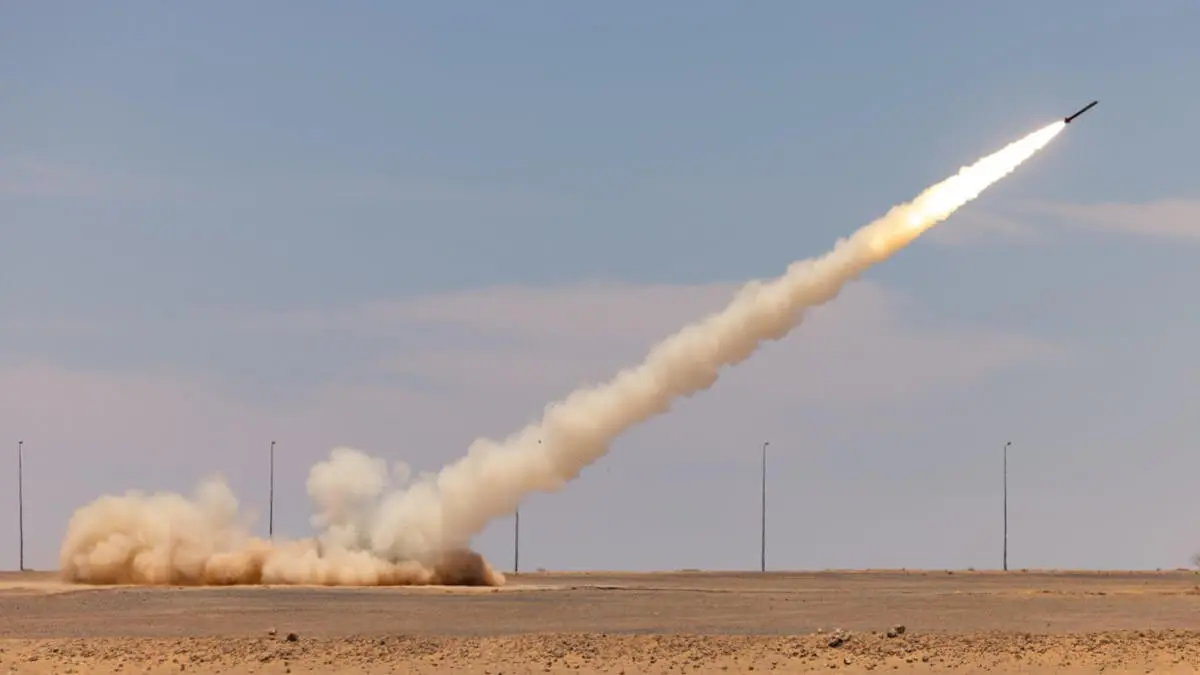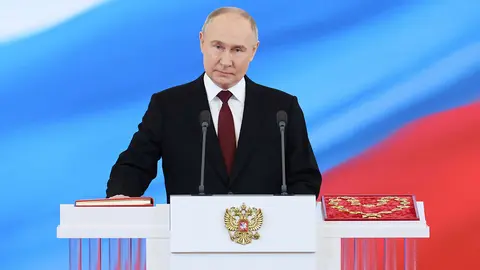United States, the biggest beneficiary of rearmament in the world

These companies, in 2022, earned the following revenues: 1) Raytheon 67.07 billion dollars; 2) Boeing, 66.61 billion dollars; 3) Lockheed Martin, with 65.98 billion dollars; 4) General Dynamics, with 34.41 billion dollars, among everything it manufactures it has built the ‘USS Nautilus’ a powerful nuclear submarine; and, 5) Northrop Grumman, with revenues of 36.60 billion dollars its main client being the US government and the Pentagon; among everything it manufactures its ‘B-2 Spirit’ bomber stands out.
With the worsening of the global outlook as a result of various armed conflicts with international repercussions, the United States has become the main arms supplier, not only through its sales to Israel and Ukraine, but also to Europe and India.
According to data from the Stockholm International Peace Research Institute (SIPRI), European arms imports have almost doubled, US and French exports have increased, and Russian arms exports have fallen sharply because they are using such weapons in the invasion of Ukraine.
European governments are showing their concern by arming themselves to the teeth in the face of continuing reports from Poland, Estonia, Lithuania, Latvia, Germany, Denmark, Finland and Norway that a war with Russia is likely.
‘About 55 per cent of European states’ arms imports from 2019 to 2023 were supplied by the United States, up from 35% from 2014 to 2018', according to Dan Smith, director of SIPRI.
Smith points out that many factors influence the decisions of European countries (mostly NATO members) to import US-made weaponry: ‘Not just maintaining transatlantic relations, but there are also technical and military issues related to cost'.
Mathew George, director of SIPRI's Arms Transfers Programme, points out that the United States has increased its global role as an arms supplier, an important aspect of its foreign policy, exporting more arms to more countries than ever before in the past.
‘This comes at a time when US economic and geopolitical dominance is being challenged by emerging powers; thus, from 2019 to 2023, it sold armaments to 107 countries, which is a significant figure because it sold more than in any previous period and far more than any other arms exporting country,’ according to the executive.
From Defence News, Chris Martin looks at the evolution of the revenues earned by the top 100 companies worldwide in the military industry. A remarkable change is also evident: in 2019 this group of companies would have obtained revenues of 524.4 billion dollars and, by 2023, of 603.9 billion dollars. By 2024, their revenues were estimated to grow by 30 %.
Russia's invasion of Ukraine on 24 February 2022 reactivated the sale of armaments in the world and its consequent production, and SIPRI itself has detected a gap between sales and production capacity that has not accelerated at the pace of purchases because problems continue to drag on in the distribution chains that were first complicated by the pandemic; then with the Russian invasion and the consequent sanctions, and then with the insecurity in the Suez Canal, the Red Sea and the Gulf of Aden, where the Houthis are attacking various ships in an attempt to boycott 30% of the world trade that transits the area.
Estimates by various ‘Think Tanks’ such as SIPRI believe that with the intensification of the war between Ukraine and Russia plus the conflict in the Middle East with Israel taking its revenge for the terrorist acts of 7 October 2023, the revenues of the global military industry made up of a hundred companies from various parts of the world could have risen by 22-27%.
This is because not only countries in a war are demanding armaments and means of defence and attack, but also because most countries are rearming in the face of the uncertain geopolitical outlook and the future of peace, and this is yielding huge profits. Even in Ukraine.
According to this Swedish-based body, Ukroboronprom is the only Ukrainian company in the list of 100 and its revenues went from 755 million dollars in 2021, to 1.3 billion dollars a year later, due to the Russian invasion and the state of war against the invader.
Russia, China and North Korea
The Stockholm International Peace Research Institute (SIPRI) with data in 2021 claims that Chinese military-related companies are driving rapid growth in arms sales in Asia.
‘There has been a wave of consolidation in the Chinese arms industry since the mid-2010s,’ said Xiao Liang, a researcher in SIPRI's Military Expenditure and Arms Production Programme. In 2021, China State Shibpbuilding Corporation became the world's largest military shipbuilder, with arms sales of 11.1 billion dollars.
Meanwhile, in 2021, Russian arms sales amounted to 17.8 billion dollars, an increase of 0.4% over 2020. There were signs of a slowdown in arms sales by its industry, most likely in favour of stockpiling them for use months later in the invasion of Ukraine.
In 2019, Russia exported arms to 31 states and in 2023 it exported to only 12, focusing more on its military strategy to further extend its occupation of Ukrainian territory.
China has been indirectly affected by this conflict because for the first time in 25 years, according to SIPRI, the United States became the largest arms supplier to Asia and Oceania. The US accounted for 34% of the arms imports of states in the region, compared to 19% for Russia and 13% for China.
In addition, India became the world's largest arms importer. Prime Minister Narendra Modi is modernising his armed forces by equipping them with the latest technology. India has a contentious border with China, Pakistan and Afghanistan. Russia was traditionally one of India's arms suppliers, but the US is also capitalising on the situation.
Last February, the US State Department notified Congress that it had given the green light for the potential sale of thirty-one MQ-98 SkyGuardian drones as well as related missiles, bombs and other equipment. In all, a 4 billion dollar deal.
In Pakistan's case, its main arms supplier is China, whose industry sells 82% of its weapons and state-of-the-art military equipment. The most recent deal is for a submarine that is being built with Chinese technology.
For its part, Russia is stockpiling its missiles. According to the BBC, it has launched 12,000 missiles at Ukraine since the invasion began more than a thousand days ago. In the most recent Russian attack it used a new type of hypersonic missile over the Ukrainian city of Dnipro.
The missile, named Oreshnik, was tested over Ukrainian territory, according to the Kremlin itself, whose spokesman, Dmitry Peskov, threatened a series of bombardments using the Oreshnik.
‘There is currently no way to counter this weapon. The missiles attack their targets at a speed of Mach 10; that means 2.5 or 3 kilometres per second. The test was successful and the target was hit,’ Putin threatened.
The Russian dictator asserted: ‘We have the right to use our weapons against the military installations of countries that allow their weapons to be used against our installations.
What role is North Korea playing in the production of Russian-launched missiles? Last March, US broadcaster Ayesha Rascoe spoke with Brookings Institution analyst Andrew Yeo about North Korea's role in Russia's war against Ukraine, particularly in missile production, after the Conflict Armament Research (CAR) team found that several missiles launched by the Russian military had been manufactured by North Korea and included electronic parts from Chinese, German, American and even Taiwanese companies.
Rascoe's question revolved around how North Korea can produce and sell weapons despite sanctions and being considered a pariah state by Washington. Yeo pointed to the black market and illicit financial networks that the North Koreans have in Southeast Asia and in Malaysia and Indonesia that do business with non-state actors. Of course, there is China, their main supplier of international trade.
‘I would ask: what kind of support are the North Koreans providing in terms of arms? And if not arms, is it support in terms of technology? We know that the North Koreans want to upgrade their submarine fleet. They want to launch more satellites into space and they need rocket technology. And so it's quite possible that the Russians will help them with all these things,’ he said.
In recent days, the US press released satellite images showing the North Korean military expanding a weapons manufacturing complex to assemble a variety of short-range missiles that Russia uses to attack Ukraine. The complex, known as February 11, is located in Ryongsong in Hamhung, North Korea's second most populous city.
South Korea's spy agency accused Pyongyang of involvement in the Russian invasion not only by supplying artillery and missiles to the Russian army (KN-23 missiles) but also thousands of troops. Washington speaks of a contingent of between 10,000 and 12,000 North Korean troops already involved in the war and at least 60 KN-23 missiles launched against Ukrainian territory so far this year.
Moscow and Pyongyang signed a strategic partnership agreement in June, pledging to provide military support to each other if either country is attacked. The Russian parliament ratified the defence treaty in October, amid reports that North Korea was sending troops along with weapons to aid Moscow's war against Ukraine.
Gaza the endless war
The Brookings Institution has long charged that Hamas has been armed by North Korea via Iran and by the Shi'ite militia Hezbollah in Lebanon.
On the Israeli side, Zain Husaain, a researcher with the Arms Transfers Programme, notes that Israel has significantly increased its arms imports.
The Stockholm International Peace Research Institute (SIPRI) estimates that, in the five-year period 2019 to 2023, Israel was the world's 15th largest importer of major arms, accounting for 2.1 per cent of global arms imports.
Although only three countries supplied major arms to Israel in the period 2019 to 2023, the United States, Germany and Italy, many others supplied military components, ammunition or services.
At this stage, the United States sold 69% of Israel's arms imports. It supplied a variety of major weapons, including aircraft, armoured vehicles, missiles and ships.
After the 7 October 2023 attacks on Israel, the White House stepped up emergency military assistance to Israel by first transferring 1,000 GBU-39 guided aircraft bombs and has since accelerated the delivery of weapons, small-diameter bombs, joint direct attack munitions guidance equipment, missiles for its Iron Dome system, artillery shells and armoured vehicles. In short, millions of dollars worth of weaponry.


